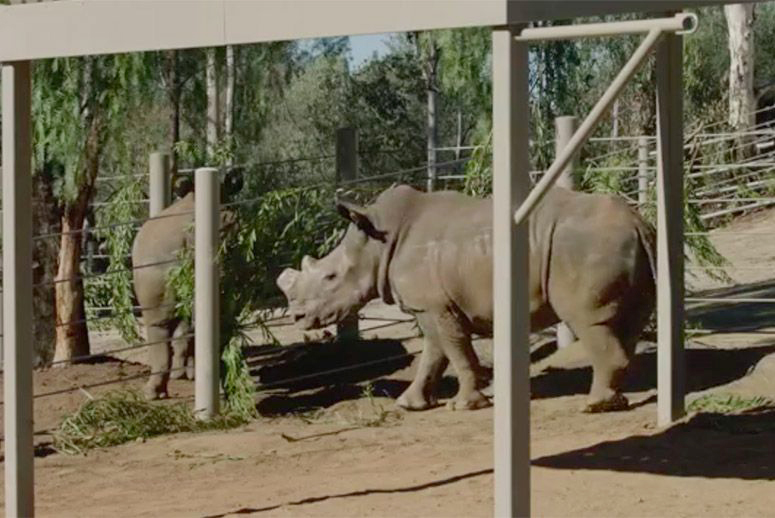
While saying goodbye to Nola the northern white rhino was heartbreaking, her legacy lives on in San Diego Zoo Global's Frozen Zoo. Researchers from the San Diego Zoo Institute for Conservation Research collected postmortem tissues from her to preserve her DNA, which have been added to frozen samples from 11 other northern white rhinos already in the Frozen Zoo. Taking a science-based approach, Oliver Ryder, Ph.D., director of genetics; Barbara Durrant, Ph.D., director of reproductive physiology; and their teams at the San Diego Zoo Institute for Conservation Research Frozen Zoo—along with collaborators at Scripps Research Institute in La Jolla and at the Institute for Zoo and Wildlife Medicine in Berlin—are working to develop and perfect assisted reproductive technology to save the northern white rhino from extinction. The first step involves sequencing the genomes of the northern white rhino. The next step requires conversion of the cells preserved in the Frozen Zoo to stem cells that could develop into sperm and eggs. From there, reproductive options might include artificial insemination, in vitro fertilization, or embryo transfer. One of the pieces fell into place at the end of 2015—San Diego Zoo Global opened a new Rhino Rescue Center at the San Diego Zoo Safari Park, and was able to bring six southern white rhinos over from South Africa to be housed at the new center. The reproductive system of rhinos is very complex, and there is still much to learn and a long way to go, but it is theoretically possible that some of these new rhinos could eventually serve as surrogates to carry northern white rhino calves. It's a project that will be developing well into the first decade of San Diego Zoo Global's next 100 years.